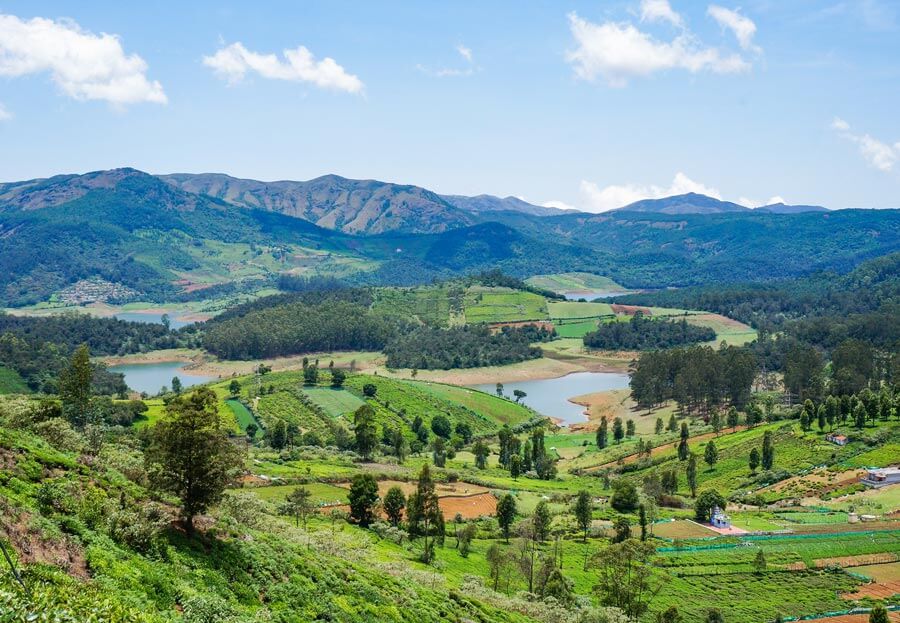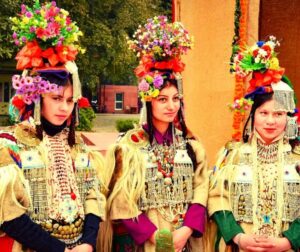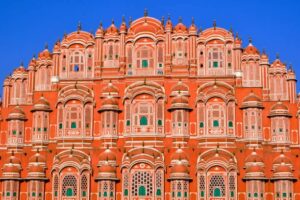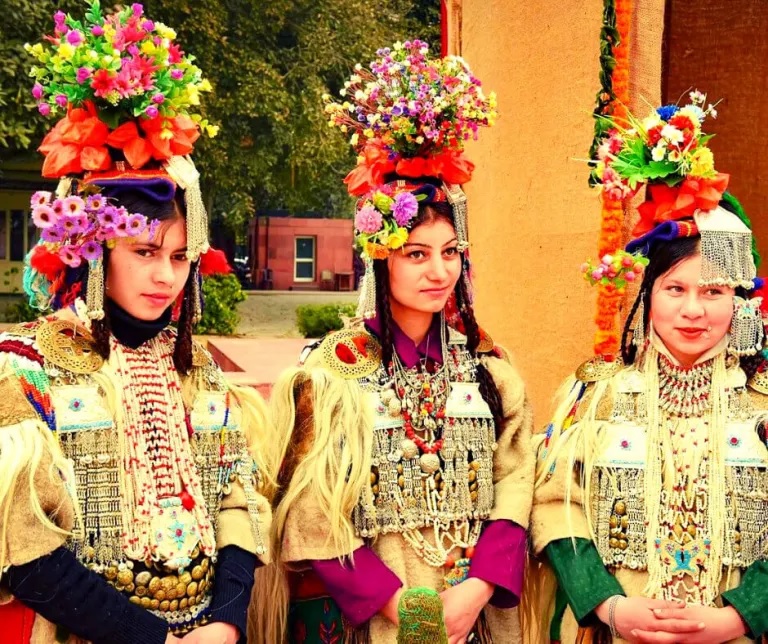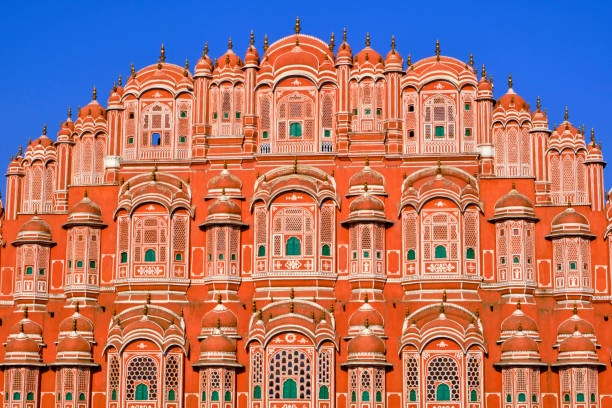Due to its geographical diversity, you can visit India any time of the year. However, winter months from October to March are preferred by most people visiting India. This is the time when you can enjoy the sunshine and the cool, dry weather. Moreover, it varies from region to region and also your areas of interest. During mild winters and hot summers, you can enjoy the natural environment of the Himalayas. Even though India is known more for its summer and monsoon season, festivals also play a major role when to travel. Here are some tips to know your best time to visit India.

General idea of the weather of India
India is a large country starting from the craggy heights of the Himalayas in the north to sultry beaches of Kerala and Tamil Nadu in the south. So, if one region is tipping down with rain and snowfall, you can have bright sunshine and cool breezes on the other end. Monsoon season, which usually is heavy during mid of July to early September, stops you from visiting north east region of India. But then you can opt for Rajasthan and Tamil Nadu which are far drier and good to visit during these months.
From November to March the season is typically dry throughout the country and you don’t even have to worry about the rains. At this time of the year the temperature is chilly and there is often snow at higher altitude. So, if you are planning to explore the spectacular Himalayan scenery, it is advisable to choose the spring or autumn because the temperature is warm and rain sparse at that time here. While you will find rain pouring in other parts of India, this region offers trekking season in full swing.
During the monsoon when most parts of India is wet, you can escape to the mountains and enjoy the paradisiacal landscape of say, Nubra Valley near Ladakh. On the other hand, Bangalore experiences moderate climate all through the year. In fact, no matter where you plan to visit in India make sure the weather is comfortable and if possible, try to avoid the peak tourist season so that you enjoy everything to the fullest.
Best time to visit the North or the Himalayan region
Due to the mountainous topography the northern part of India experiences cold winters. So, if you are looking for a winter vacation with difference, you can visit Manali for skiing, enjoy snowfall in Shimla, Mussoorie and other hilly regions experiencing snowfall. However, the best time to visit this region is autumn when the monsoons are over and the chilly winter is yet to set in. In October and November you can enjoy the places like Shimla, Manali, Srinagar, Dharamshala as well as Rishikesh and Jammu. April, May and June are also good here.
Planning to tour Central India
Central India experiences very hot summer and wet monsoon season. The region gets very heavy rain from mid of June to early September. As soon as the monsoon ends, the weather becomes pleasant. So, November to March is the right time to visit the bustling cities of Mumbai, Pune or go on a tiger hunt in Kanha or Bandhavgarh national parks.
East and North East
North eastern India experiences the similar weather conditions as of Mumbai and the rest of the central India. So, the best time to visit Calcutta, Lucknow and Varanasi are from November to March. To visit the places situated at higher altitude like Darjeeling you need to be prepared for the cold weather if you visit there especially during January and February. During the months of April, May and June the east of India tends to stay hot even during nights and so people prefer travelling to hill stations like Darjeeling where they are offered cooler and near perfect hiking conditions.
Rajasthan and the golden triangle
If you want to visit Taj mahal, romantic pink city of Jaipur and the bustling metropolitan city, Delhi, the best time is between November to March. The weather is pleasant and the days are sunny, dry and warm to explore the old cities. Places like Delhi, Agra, Jaipur and Jodhpur usually escapes with mild downpour and so you will have less visitors making you enjoy the popular sites with more manageable temperature.
Goa and Sothern India
The best time to visit South India is December to march. The season is dry offering you bright sunlight helping you exploring the fascinating backwaters and lazing on the glorious beaches. Although from June to August Kerala and Goa experiences wetter months, locals call these months ideal for ayurvedic massage treatments. This is the time when Tamil Nadu is drier as it gets rain during October and November. These are the months perfect for visiting Goa too.
Festival and events in India
If you are interested in experiencing the traditions of India and be a part of some of the events, you need to check out with your travel agent and customize a package that can help you attend the events of your interests during your stay in India. With plenty of religious festivals celebrated in India during different parts of the year, planning a trip including all in a limited period of time would be difficult.
For example, Rajasthan International Folk festival is held every October in Jodhpur where traditional musicians, dancers and artists from all over the state gather at the Mehrangar Fort, which is an amazing venue as well. Jaipur Literary festival is also a cool event that you might want to be a part of especially if you have similar interests.
India is vast and therefore, can be little overwhelming when it comes to panning a visit. Take some time, sit with your travel agent, share your interests and expectations from your visit to India. This will help him customize your tour package and help you have the experience of lifetime when you visit India. So, learn to plan your holiday and best things to do during the season you wish to make your visit. Your travel agent will help you plan a perfect trip with candid advice and wide-ranging travel experience.
Due to its geographical diversity, you can visit India any time of the year. However, winter months from October to March are preferred by most people visiting India. This is the time when you can enjoy the sunshine and the cool, dry weather. Moreover, it varies from region to region and also your areas of interest. During mild winters and hot summers, you can enjoy the natural environment of the Himalayas. Even though India is known more for its summer and monsoon season, festivals also play a major role when to travel. Here are some tips to know your best time to visit India.

General idea of the weather of India
India is a large country starting from the craggy heights of the Himalayas in the north to sultry beaches of Kerala and Tamil Nadu in the south. So, if one region is tipping down with rain and snowfall, you can have bright sunshine and cool breezes on the other end. Monsoon season, which usually is heavy during mid of July to early September, stops you from visiting north east region of India. But then you can opt for Rajasthan and Tamil Nadu which are far drier and good to visit during these months.
From November to March the season is typically dry throughout the country and you don’t even have to worry about the rains. At this time of the year the temperature is chilly and there is often snow at higher altitude. So, if you are planning to explore the spectacular Himalayan scenery, it is advisable to choose the spring or autumn because the temperature is warm and rain sparse at that time here. While you will find rain pouring in other parts of India, this region offers trekking season in full swing.
During the monsoon when most parts of India is wet, you can escape to the mountains and enjoy the paradisiacal landscape of say, Nubra Valley near Ladakh. On the other hand, Bangalore experiences moderate climate all through the year. In fact, no matter where you plan to visit in India make sure the weather is comfortable and if possible, try to avoid the peak tourist season so that you enjoy everything to the fullest.
Best time to visit the North or the Himalayan region
Due to the mountainous topography the northern part of India experiences cold winters. So, if you are looking for a winter vacation with difference, you can visit Manali for skiing, enjoy snowfall in Shimla, Mussoorie and other hilly regions experiencing snowfall. However, the best time to visit this region is autumn when the monsoons are over and the chilly winter is yet to set in. In October and November you can enjoy the places like Shimla, Manali, Srinagar, Dharamshala as well as Rishikesh and Jammu. April, May and June are also good here.
Planning to tour Central India
Central India experiences very hot summer and wet monsoon season. The region gets very heavy rain from mid of June to early September. As soon as the monsoon ends, the weather becomes pleasant. So, November to March is the right time to visit the bustling cities of Mumbai, Pune or go on a tiger hunt in Kanha or Bandhavgarh national parks.
East and North East
North eastern India experiences the similar weather conditions as of Mumbai and the rest of the central India. So, the best time to visit Calcutta, Lucknow and Varanasi are from November to March. To visit the places situated at higher altitude like Darjeeling you need to be prepared for the cold weather if you visit there especially during January and February. During the months of April, May and June the east of India tends to stay hot even during nights and so people prefer travelling to hill stations like Darjeeling where they are offered cooler and near perfect hiking conditions.
Rajasthan and the golden triangle
If you want to visit Taj mahal, romantic pink city of Jaipur and the bustling metropolitan city, Delhi, the best time is between November to March. The weather is pleasant and the days are sunny, dry and warm to explore the old cities. Places like Delhi, Agra, Jaipur and Jodhpur usually escapes with mild downpour and so you will have less visitors making you enjoy the popular sites with more manageable temperature.
Goa and Sothern India
The best time to visit South India is December to march. The season is dry offering you bright sunlight helping you exploring the fascinating backwaters and lazing on the glorious beaches. Although from June to August Kerala and Goa experiences wetter months, locals call these months ideal for ayurvedic massage treatments. This is the time when Tamil Nadu is drier as it gets rain during October and November. These are the months perfect for visiting Goa too.
Festival and events in India
If you are interested in experiencing the traditions of India and be a part of some of the events, you need to check out with your travel agent and customize a package that can help you attend the events of your interests during your stay in India. With plenty of religious festivals celebrated in India during different parts of the year, planning a trip including all in a limited period of time would be difficult.
For example, Rajasthan International Folk festival is held every October in Jodhpur where traditional musicians, dancers and artists from all over the state gather at the Mehrangar Fort, which is an amazing venue as well. Jaipur Literary festival is also a cool event that you might want to be a part of especially if you have similar interests.
India is vast and therefore, can be little overwhelming when it comes to panning a visit. Take some time, sit with your travel agent, share your interests and expectations from your visit to India. This will help him customize your tour package and help you have the experience of lifetime when you visit India. So, learn to plan your holiday and best things to do during the season you wish to make your visit. Your travel agent will help you plan a perfect trip with candid advice and wide-ranging travel experience.

